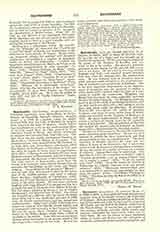

Hautecombe (ALTACOMBA, ALTIECOMBIEUM), a Cistercian monastery near Aix-les-Bains in Savoy, Diocese of Chambery (formerly Geneva); founded about A.D. 1101 in a narrow valley (or combe) between hills near the Lake of Bourget by hermits from Aulpes, in the Lake of Geneva. About 1125 it was transferred to a site on the northwestern shore of the lake under Mont du Chat, granted to it by Amadeus, Count of Savoy; and shortly afterwards it accepted the Cistercian Rule from Clairvaux. The first abbot was the saintly and learned Amadeus de Haute-Rive, afterwards Bishop of Lausanne. Two daughter-houses were founded from Hautecombe at an early date, one, Fossa-Nuova (afterwards called For Appio), in the Diocese of Terracina, in 1135, and the other, S. Angelo de Petra, close to Constantinople in 1214. Celestine IV and Nicholas III have been claimed as alumni of Hautecombe, but this is disputed by Janauschek, the historian of the Cistercian Order. The chief interest of Hautecombe, apart from the beauty of its situation, arises from its having been for centuries the burial-place of the Counts and Dukes of Savoy. Count Humbert III, known as “Blessed“, and his wife Anne were interred there in the latter part of the twelfth century; and about a century later Boniface, Archbishop of Canterbury (1245-1270), son of Count Thomas I, was buried in the sanctuary of the abbey church. He had come out from England with King Edward I to accompany him in a crusade, but died at the castle of St. Helena in Savoy. The last abbot, Anthony of Savoy, a son of Charles Emmanuel I, was interred there in 1673. The abbey was restored (in a debased style) by one of the dukes about 1750, but it was secularized and sold in 1792, when the French entered Savoy, and was turned into a china-factory. King Charles Felix of Sardinia purchased the ruins in 1824, had the church rebuilt and reconsecrated, and restored it to the Cistercian Order. He and his queen (Maria Christina of Naples) are buried in the Belley chapel, which forms a kind of vestibule to the church. Some 300 statues and many frescoes adorn the interior of the church, which is 215 feet long, with a transept 85 feet wide. Most of the tombs are little more than reproductions of the medieval monuments.
D. O. HUNTER-BLAIR

